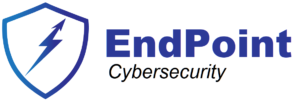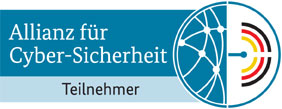Understanding ISO 27001:2022 Annex A.8 – Asset Management
ISO 27001:2022 Annex A.8, “Asset Management,” addresses the importance of identifying, classifying, and managing information assets within an organization. This annex emphasizes the need for organizations to establish processes for inventorying assets, assessing their value, and implementing appropriate controls to protect them. In this technical educational article, we’ll explore how to implement Annex A.8 in practice, highlight its significance, and discuss the audit process for assessing compliance.
What is an Asset ?
In the context of ISO 27001:2022, an asset refers to anything that has value to an organization and needs to be protected.
This includes not only tangible assets such as
- Physical assets:
- hardware and equipment
- buildings
- vehicles
- People
- Employees
- Customers
- Suppliers
- Software
- Intangible
- Data
- Intellectual property
- Proprietary information
- Reputation
- Market Share
ISO 27001:2022 recognizes that assets come in various forms and play a crucial role in achieving an organization’s objectives.
What makes an asset worth to be added to the list?
Here are some key points to consider regarding assets in the context of ISO 27001:2022:
- Identification: Organizations need to identify and inventory all their assets, including both tangible and intangible ones. This involves understanding what assets the organization possesses, where they are located, and who has ownership or responsibility for them. If this can be done, then the asset is worth enough to be considered to be managed.
- Classification: Assets should be classified based on their value, sensitivity, and criticality to the organization. This classification helps prioritize protection efforts and allocate resources effectively. For example, sensitive customer data may be classified as high-value assets requiring stringent security measures. If an asset is classified with a category that makes it important for the company, then it should be definitely managed.
- Risk Management: Assets are subject to various risks, including cybersecurity threats, natural disasters, and human error. Organizations need to conduct risk assessments to identify and mitigate threats to their assets effectively. This involves evaluating the likelihood and potential impact of risks and implementing controls to reduce risk to an acceptable level.
- Protection: Based on the risk assessment for an asset, organizations must implement appropriate controls to protect their assets from unauthorized access, disclosure, alteration, or destruction. This includes measures such as access controls, encryption, backup procedures, and physical security measures. Based on the measures identified, an asset can be quite expensive to be protected, but losing it or damaging it might prove to be even more expensive.
Importance of Asset Management
Effective asset management is crucial for organizations to safeguard their information assets, optimize resource allocation, and mitigate risks. Annex A.8 underscores this importance by:
- Risk Reduction: Identifying and classifying information assets helps organizations prioritize security measures and allocate resources effectively to mitigate risks.
- Compliance: Maintaining an accurate inventory of assets and implementing appropriate controls ensures compliance with regulatory requirements and industry standards.
- Cost Savings: Efficient asset management practices enable organizations to optimize resource utilization and avoid unnecessary expenses associated with redundant or underutilized assets.
Implementing Annex A.8 in Practice
To effectively implement Annex A.8, organizations can follow these practical steps:
- Asset Identification: Begin by identifying all information assets within the organization, including hardware, software, data, and intellectual property. Establish criteria for identifying assets, such as ownership, criticality, and sensitivity.Example: Develop an asset inventory list categorizing assets based on their type, location, owner, and importance to business operations.
- Asset Classification: Classify information assets based on their value, sensitivity, and criticality to the organization. Define classification levels or categories to differentiate between assets requiring different levels of protection.Example: Classify data assets as public, internal use only, confidential, or restricted based on their sensitivity and impact on the organization if compromised.
- Asset Ownership: Assign ownership responsibilities for each information asset to designated individuals or departments within the organization. Clearly define roles and responsibilities for managing and protecting assigned assets.Example: Assign data ownership responsibilities to business units or functional departments responsible for creating, accessing, or managing specific types of data.
- Risk Assessment: Conduct risk assessments to identify threats, vulnerabilities, and potential impacts on information assets. Assess the likelihood and impact of potential risks to prioritize mitigation efforts.Example: Perform a vulnerability assessment to identify weaknesses in IT systems and applications that could expose information assets to security threats.
- Control Implementation: Implement appropriate controls to protect information assets from unauthorized access, disclosure, alteration, or destruction. Select controls based on the results of risk assessments and compliance requirements.Example: Implement access control mechanisms, such as user authentication, role-based access control (RBAC), and encryption, to safeguard sensitive information assets from unauthorized access.
Audit of Compliance with Annex A.8
Auditing compliance with Annex A.8 is essential for evaluating an organization’s adherence to asset management requirements. Here’s how the audit process typically unfolds:
- Audit Preparation: The organization gathers documentation related to asset management policies, procedures, and controls. An audit team is appointed to facilitate the audit process.
- Audit Planning: The audit team defines the audit scope, objectives, and criteria. They develop an audit plan outlining the audit activities, timelines, and responsibilities of auditors and auditees.
- On-site Audit: Auditors conduct on-site visits to assess the implementation of asset management controls. They review documentation, interview personnel, and observe asset management practices in action. Auditors may use checklists or standardized assessment tools to evaluate compliance.
- Audit Findings: After the on-site audit, auditors analyze their findings and identify areas of non-compliance or improvement opportunities. They document their observations, including strengths and weaknesses in the organization’s approach to asset management.
- Reporting: Auditors prepare an audit report summarizing their findings, conclusions, and recommendations for corrective actions. The report is shared with senior management and relevant stakeholders for review and action.
- Follow-up: Management addresses audit findings by implementing corrective actions and improvements as recommended. Follow-up audits may be conducted to verify the effectiveness of corrective measures and ensure ongoing compliance with Annex A.8 requirements.
Conclusions
ISO 27001:2022 Annex A.8 highlights the importance of asset management in safeguarding information assets and mitigating risks. By implementing robust processes for identifying, classifying, and managing information assets, organizations can optimize resource allocation, ensure compliance, and enhance their security posture. Regular audits help assess compliance with Annex A.8 requirements and drive continuous improvement in asset management practices. Prioritizing asset management is essential for organizations seeking to protect their valuable information assets and maintain trust in their operations.
The post Understanding ISO 27001:2022 Annex A.8 – Asset Management first appeared on Sorin Mustaca on Cybersecurity.




